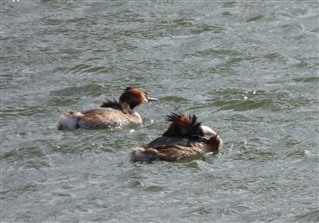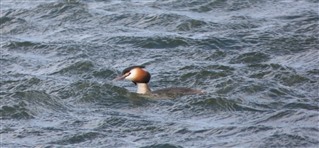Storm Gareth ruffled a few feathers in the Aire Valley this week, and blew my cobwebs away when I visited St Aidan's on Wednesday. I didn't venture any further than a walk round Bowers – it was difficult staying upright in the wind – where just a few birds braved the choppy waters.

Storm Gareth ruffled a few great crested grebe feathers

Stormy waters

This male tufted duck looks distinctly unimpr…